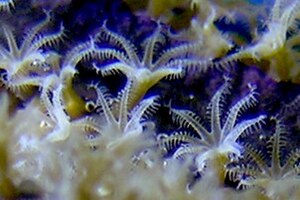Life cycle
Life Cycle[edit | edit source]
The term "life cycle" refers to the series of changes in the life of an organism, including reproduction. It encompasses the entire sequence of stages in the life of an organism, from the initial stage of development to maturity and eventual death. Life cycles vary significantly among different species, reflecting the diversity of life on Earth.
Types of Life Cycles[edit | edit source]
Life cycles can be broadly categorized into several types based on the organism's reproductive strategy and developmental stages.
Simple Life Cycles[edit | edit source]
In simple life cycles, organisms undergo a straightforward sequence of stages. For example, many bacteria and unicellular organisms reproduce through binary fission, a process where a single cell divides into two identical daughter cells. This type of life cycle is characterized by rapid reproduction and minimal differentiation between stages.
Complex Life Cycles[edit | edit source]
Complex life cycles involve multiple stages with distinct forms and functions. These are common in many invertebrates, amphibians, and plants. For instance, the life cycle of a butterfly includes the egg, larva (caterpillar), pupa (chrysalis), and adult stages.
Alternation of Generations[edit | edit source]
Some organisms, particularly plants and certain algae, exhibit alternation of generations, where the life cycle alternates between a multicellular diploid phase (sporophyte) and a multicellular haploid phase (gametophyte). This is a key feature in the life cycles of ferns, mosses, and other non-flowering plants.
Life Cycles in Cnidarians[edit | edit source]
Cnidarians, such as jellyfish, corals, and sea anemones, have fascinating life cycles that often include both asexual and sexual reproduction.
Polyp and Medusa Stages[edit | edit source]
Many cnidarians exhibit a life cycle that alternates between a polyp stage and a medusa stage. The polyp is typically sessile and asexual, while the medusa is free-swimming and sexual.
In the polyp stage, the organism is attached to a substrate and reproduces asexually by budding. This stage is exemplified by corals and sea anemones.
The medusa stage is free-swimming and typically reproduces sexually. Jellyfish are well-known for their medusa stage, where they release gametes into the water for external fertilization.
Coral Life Cycle[edit | edit source]
Corals are colonial organisms composed of numerous polyps. Each polyp is capable of budding to form new polyps, contributing to the growth of the coral colony.
Corals also engage in sexual reproduction, releasing eggs and sperm into the water column, where fertilization occurs. The resulting larvae, known as planulae, settle on a substrate and develop into new polyps.
Life Cycles in Other Cnidarians[edit | edit source]
Sea Anemones[edit | edit source]
Sea anemones are primarily polypoid throughout their life cycle. They reproduce both sexually and asexually, with some species capable of splitting into two individuals through a process called fission.
Box Jellyfish[edit | edit source]
The box jellyfish, or sea wasp, has a life cycle that includes both polyp and medusa stages. The medusa stage is notorious for its potent venom.
Stalked Jellyfish[edit | edit source]
Stalked jellyfish are unique among jellyfish as they remain attached to substrates throughout their life cycle, resembling a polyp more than a typical medusa.
Related Pages[edit | edit source]
Search WikiMD
Ad.Tired of being Overweight? Try W8MD's physician weight loss program.
Semaglutide (Ozempic / Wegovy and Tirzepatide (Mounjaro / Zepbound) available.
Advertise on WikiMD
|
WikiMD's Wellness Encyclopedia |
| Let Food Be Thy Medicine Medicine Thy Food - Hippocrates |
Translate this page: - East Asian
中文,
日本,
한국어,
South Asian
हिन्दी,
தமிழ்,
తెలుగు,
Urdu,
ಕನ್ನಡ,
Southeast Asian
Indonesian,
Vietnamese,
Thai,
မြန်မာဘာသာ,
বাংলা
European
español,
Deutsch,
français,
Greek,
português do Brasil,
polski,
română,
русский,
Nederlands,
norsk,
svenska,
suomi,
Italian
Middle Eastern & African
عربى,
Turkish,
Persian,
Hebrew,
Afrikaans,
isiZulu,
Kiswahili,
Other
Bulgarian,
Hungarian,
Czech,
Swedish,
മലയാളം,
मराठी,
ਪੰਜਾਬੀ,
ગુજરાતી,
Portuguese,
Ukrainian
Medical Disclaimer: WikiMD is not a substitute for professional medical advice. The information on WikiMD is provided as an information resource only, may be incorrect, outdated or misleading, and is not to be used or relied on for any diagnostic or treatment purposes. Please consult your health care provider before making any healthcare decisions or for guidance about a specific medical condition. WikiMD expressly disclaims responsibility, and shall have no liability, for any damages, loss, injury, or liability whatsoever suffered as a result of your reliance on the information contained in this site. By visiting this site you agree to the foregoing terms and conditions, which may from time to time be changed or supplemented by WikiMD. If you do not agree to the foregoing terms and conditions, you should not enter or use this site. See full disclaimer.
Credits:Most images are courtesy of Wikimedia commons, and templates, categories Wikipedia, licensed under CC BY SA or similar.
Contributors: Prab R. Tumpati, MD







